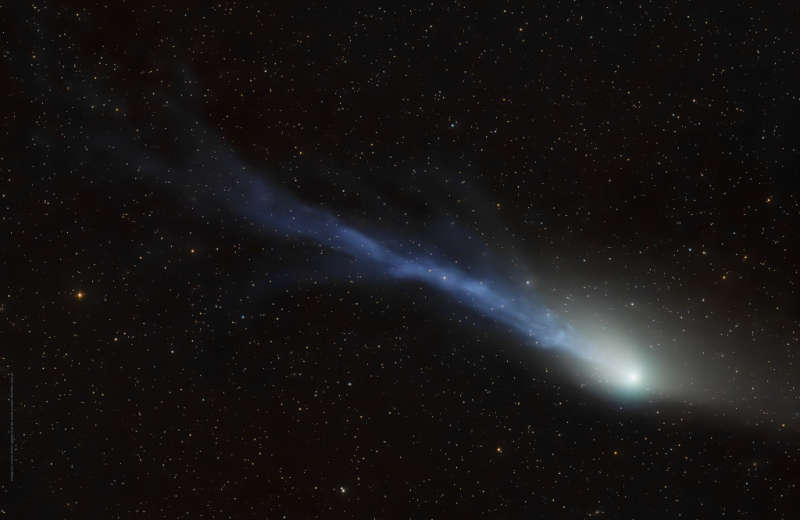
|
Credit & Copyright: Dan Bartlett`
Explanation:
Not
a paradox,
Comet 13P/Olbers is
returning to the inner
Solar System
after 68 years.
The periodic,
Halley-type
comet will reach its next
perihelion or closest approach to the Sun on June 30
and has become a target for binocular viewing low in
planet
Earth's northern hemisphere
night skies.
But this sharp telescopic image of 13P is
composed of
stacked exposures made on the night of June 25.
It easily reveals shifting details in the bright comet's
torn and tattered ion tail
buffeted by the wind from
an active Sun, along with a
broad, fanned-out
dust tail and slightly greenish coma.
The frame spans over two degrees
across a background of faint stars
toward the constellation Lynx.
|
January February March April May June July August September October November December |
| ||||||||||||||||||||||||||||||||||||||||||||||||
NASA Web Site Statements, Warnings, and Disclaimers
NASA Official: Jay Norris. Specific rights apply.
A service of: LHEA at NASA / GSFC
& Michigan Tech. U.
Based on Astronomy Picture
Of the Day
Publications with keywords: comet
Publications with words: comet
See also:
- APOD: 2025 September 30 Á Comet Lemmon Brightens
- APOD: 2025 September 29 Á Two Camera Comets in One Sky
- APOD: 2025 September 26 Á A SWAN an ATLAS and Mars
- APOD: 2025 September 18 Á Comet C/2025 R2 SWAN
- APOD: 2025 September 16 Á New Comet SWAN25B over Mexico
- APOD: 2025 July 7 Á Interstellar Comet 3I ATLAS
- Comet C/2025 F2 SWAN
